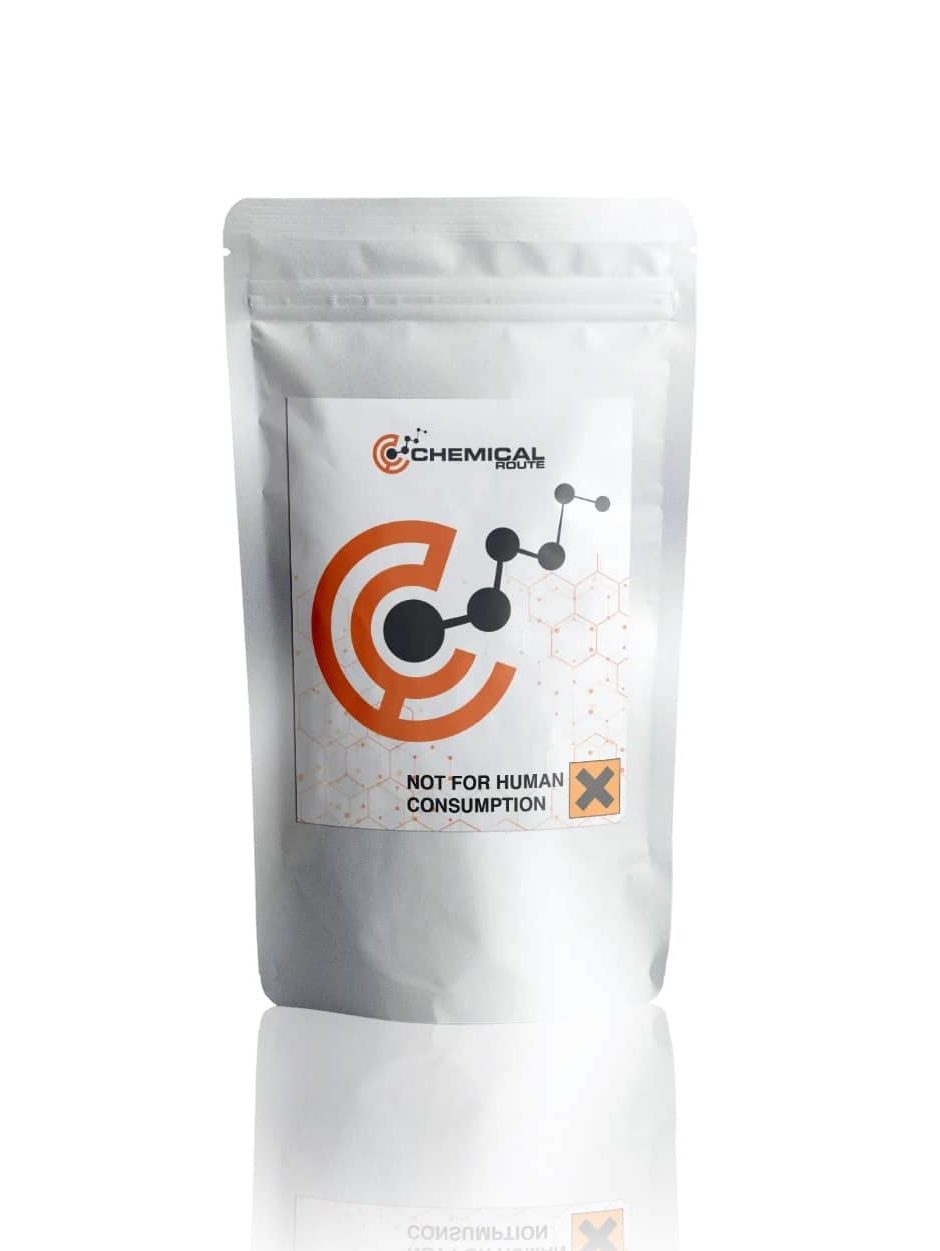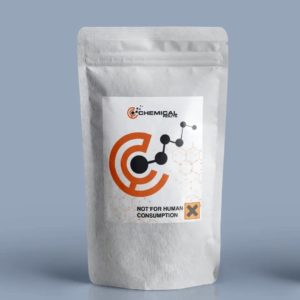Description
Eticyclidine
Product information
IUPAC-name N-Ethyl-1-phenylcyclohexylamine
Synonyms Eticyclidine, PCE, Cyclohexamine, PCPEt, N-ethyl-1-Phenylcyclohexanamine
Formal name N-ethyl-1-
Cas number 2201-15-2
Formula C15H23NO
Molar Mass 233.355 g·mol−1
Purity 99.0 % min.
Formulations A neat solid, Powder
Solubility
- DMF: 20 mg/ml
- DMSO: 14 mg/ml
- Ethanol: 25 mg/ml
- PBS (pH 7.2): 10 mg/ml
Eticyclidine, PCE, Cyclohexamine, PCPEt, N-ethyl-1-Phenylcyclohexanamine
In the field of dissociative anesthesia, the drug eticyclidine is a derivative of phencyclidine that can cause hallucinogenic effects. It was developed by Parke-Davis during the 1970s. Unfortunately, research on this drug was not carried out after the development of ketamine, which had more favorable properties.
Like PCP, PCE is a synthetic substance that can cause various effects, such as hallucinogenic and dissociative anesthesia. It is mainly used as an antagonist of the receptor known as the NMDA. Like its analogue, it also exerts its effects by binding to and blocking the activity of the receptor.
Although it has similar effects to PCP, PCE is less accepted by users due to its unpleasant taste and its tendency to cause nausea. During the 1970s, it was placed on the Schedule 1 list of illegal substances. Although it was only briefly abused during the 1980s and 1970s, little is known about this drug.
In the 1950s, PCP was marketed as an anesthetic. However, it was removed from the market in 1965 due to the high incidence of side effects such as hallucinogenic and dissociative anesthesia. After researchers at Parke-Davis discovered that ketamine could be used as an anesthetic, they developed a derivative of PCP known as ketamine. Since then, various synthetic versions of PCP have been sold as non-medical and recreational drugs.
Today, PCE is commonly used as a recreational drug, and it is often compared to the popular cousins of PCP, such as 3-MeO-PCP and 3-MeO-PCE. It can be taken orally, insufflated, or injected. Besides its effects, it has also been noted for its diversity in effects, abuse liability, and potency. Although it has similar effects to PCP, it is less accepted by users due to its unpleasant taste and its tendency to cause nausea.
Chemistry
Eticyclidine, also known as PCE, is a synthetic version of arylcyclohexylamine. It contains cyclohexane, which is a saturated ring, and a piperidine ring, which is a nitrogenous six-member ring. Like with PCP, the initialism of PCE is an initialism that originated from the letters of the three rings ethyl, phenyl, and cyclohexane.
Pharmacology
The type of receptor that’s known to allow electrical signals to pass through nerve cells in the spinal column and brain is known as the NMDA receptor. When these signals are activated, the receptor must be opened to allow them to pass. Inhibiting this signaling can lead to various side effects. This condition causes the nervous system to become disconnected from the flow of information. It can lead to various side effects, such as loss of sensation and motor discoordination.
In addition to blocking the NMDA receptor, the PCE also acts as a reuptake inhibitor, which can also cause dissociative effects. This drug’s ability to stimulate the nervous system provides an explanation for its positive effects.
Although it’s similar to PCP in terms of its effects, the unpleasant taste and its tendency to cause nausea have made users less likely to use it.
The toxicological and physiological properties of this compound has not been analyzed. Usage of this Chemical should be for research and forensic purposes only.
WARNING This product is not for human or veterinary use.

This product is only available to persons of 21 years old and above.
Hazard statement(s)
| H302 | Harmful if swallowed |
| H315 | Causes skin irritation |
| H319 | Causes serious eye irritation |
| H332 | Harmful if inhaled |
| H335 | cause respiratory irritation |
| H336 | cause drowsiness or dizziness |
| Precautionary statement(s) | |
| P264 | Wash hands thoroughly after handling |
| P280 | protective gloves/protective clothing/eye protection/face protection |
| P305 + P351 + P338 | IF IN EYES: Rinse cautiously with for several minutes. Remove contact lenses, if present and easy to do. Continue rinsing. |
| P337 + P313 | If eye irritation persists: Get medical advice/attention |
| P261 | Avoid breathing dust/ fume/ gas/ mist/ vapors/ spray |
| P271 | Use only outdoors or in a well-ventilated area |
| P304 + P340 | IF INHALED: Remove victim to fresh air and keep at rest in a position comfortable for breathing |
| P312 | Call a POISON CENTER or doctor/physician if you feel unwell |
| P403 + P233 | Store in a well-ventilated place. Keep container tightly closed |
| P405 | Store locked up |
| P501 | Dispose of contents/container to a licensed disposal company |




Reviews
There are no reviews yet.